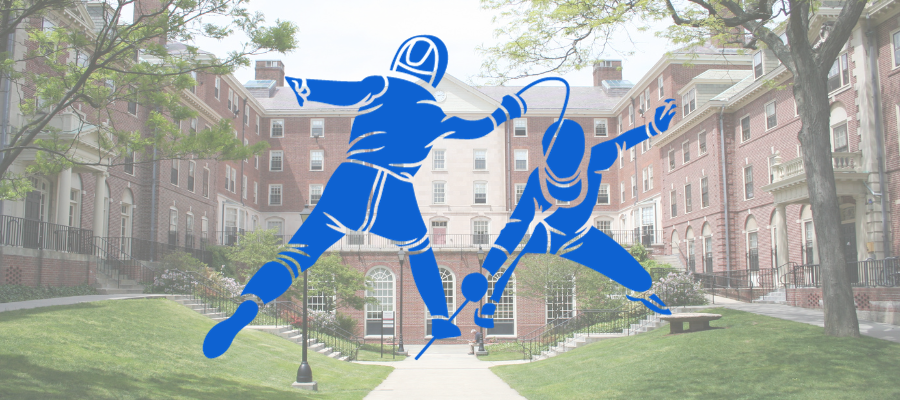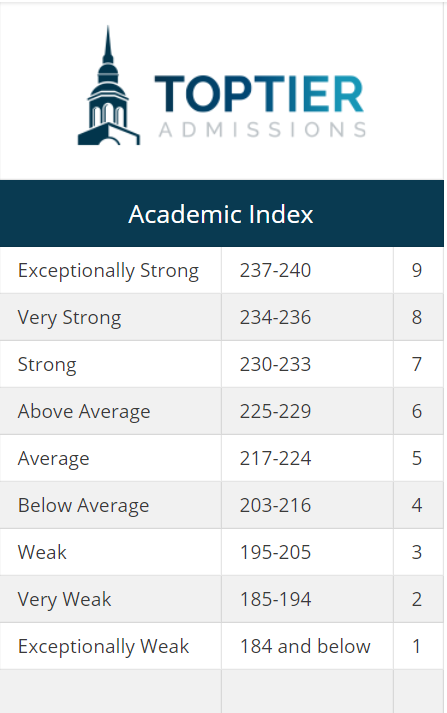How Do Ivy League Colleges Use the Academic Index in the Athlete Recruitment of Fencers?
origins of the academic index (ai)
The Academic Index (AI) was developed by the Ivy League colleges in 1985 to ensure uniformity of academic standards in athlete recruitment. The AI was and is still used to determine whether a potential athlete recruit is qualified to withstand the academic rigor of Ivy League college classes. Ivy League colleges wanted to make sure that the athletes recruited to their football and other major sports teams remained eligible to play for the college for the entire 4 year period, and would not be at risk of dropping out prematurely due to academic issues.
As much as the Ivy League colleges desired to excel in athletics, they needed to pay just as much attention to their graduation rates, which ultimately also affected their prestige and their positions on the US News and World Report College Rankings. These colleges also needed to ensure that the coaches could hold on to their athletes, and not end up with gaps on their teams due to academic attrition.
To ensure the best outcomes for the Ivy League colleges, their coaches and the recruited athletes, the Academic Index was born.
Today, all elite colleges use their versions of AI not just for their athlete recruits, but they also use a variation of the AI as a means of parsing non-athlete recruits for academic qualifications.
how is the academic index calculated?
The exact formula for calculating the AI remains an Ivy League mystery. Based on extensive research of publicly available resources, and chats with seasoned college admissions counselors, we believe that what we present below is generally reflective of how the AI is structured and calculated for potential athlete recruits.
the original calculation
The original AI calculation included the following components:
class rank
best combined SAT scores for mathematics and critical reasoning
the best 2 (or 3) SAT Subject Test scores
It was possible to score up to a maximum of 80 for each component, leading to a maximum score of 240. The Ivy League does not disclose the weightings for each of these components, and the exact formula remains a mystery.
the modified calculation
The components of the Individual AI calculation have changed slightly over time to reflect that students now take the ACT as well as the SAT, and many schools no longer report class rank. The AI components are believed to now include the following:
the Class Rank Conversion (CRC), which adjusts your GPA for the rigor of your subjects, and the reputation of your school
best SAT or ACT scores
best 2 SAT Subject Test scores
The AI is apparently still scored for a maximum of 80 points per component for a maximum total of 240 points. The weightings for each component and the exact formula for calculating the AI are not disclosed by the Ivy League.
Academic Index Scores and Rank
academic index scores and rankings
Top Tier Admissions, a college admissions counseling firm founded by a former Ivy League admissions officer shares an AI calculator where you can plug in your scores to obtain an indicative AI score and your indicative AI rank.
The AI illustration put out by Top Tier Admissions ranks the scores on a scale of 1 to 9. We understand that the scale for AI rank varies between the colleges, with some using a scale of 1 to 6. Before you freak out with the Exceptionally Strong to Exceptionally Weak ranking used in the table, you should put in perspective that a score of 216 is still a score of 90% out of a total of 240.
Take note that the calculations are indicative only, and you should pay careful attention to each college’s published test score ranges and average GPA for their incoming freshman class. and compare that to your own GPA and test scores.
Note: There is no marketing or other relationship between Top Tier Admissions and Fencing Parents.
Hosted by Donna Meyer - Donna is the founder of Fencing Parents, creator of the Vital Statistics of Fencers at Colleges with NCAA Fencing teams, a resource that has brought transparency to and helped hundreds of fencers identify their match at college fencing teams and publisher of the annual List of Feeder Clubs to the Highly Selective Colleges in Division 1. She was a fencing parent herself for almost 10 years.
You may also be interested in Fencing Parents articles on college athlete recruitment for fencing:
2021/2022 Complete List of US Colleges with Fencing Teams (NCAA sanctioned and club level)
Can fencing help me get into college?
A Fencer’s Guide to NCAA Rules Governing Athlete Recruitment
Find out where your fencer may be competitive as an athlete recruit
feeder clubs to highly selective colleges in division 1
CLUBS AND COACHES PLAY A VITAL ROLE IN PREPARING FENCERS FOR RECRUITMENT TO THE IVY LEAGUE AND ELITE COLLEGES.
Find out who these feeder clubs and coaches are to the most selective fencing colleges in Division 1.
benchmarking the athlete recruit’s academic index
The potential athlete recruit’s Individual AI is measured against several AI benchmarks.
Campus AI
The Campus AI is the average of the collective AI of all students on campus. The variation in Campus AI between the Ivy League colleges is very small, usually no more than 3% to 5%.
The potential athlete recruit’s Individual AI is benchmarked against Campus AI. There is little leeway to fall far from the Campus AI.
It is generally understood that an athlete recruit’s Individual AI should be no more than one standard deviation from the average Campus AI, which usually means that the potential athlete recruit’s Individual AI should be no more than 10 to 15 points below the Campus AI.
Several private school college counseling offices have calculated approximations of what they believe are the Ivy League Campus AIs:
Harvard - 220
Yale - 220
Princeton - 220
Dartmouth - 216
Brown - 216
UPenn - 216
Columbia - 210
Cornell - 210
team ai
The Team AI is the average of the Individual AIs of every member of the team in a particular sport.
The Team AI must be within one standard deviation of the Campus AI. This means that for every athlete who is admitted with a low Individual AI, that athlete’s low AI must be offset with another athlete on the same team with a much higher Individual AI. The exceptions to this are explained under Athletic AI below.
The Ivy Colleges apparently provide their coaches with guidelines for building their teams based on athletic needs, the college’s academic profile and the college’s AI. To help coaches achieve the right balance, every team is assigned an annual “quota” for recruited athletes within one of four bands.
Team AI Chart - Montclair Kimberley Academy
These bands are:
Band 4 - athletes whose Individual AIs are at or above the Campus AI
Band 3 - athlete’s whose Individual AIs are one standard deviation or less below the Campus AI
Band 2 - athlete’s whose Individual AIs are between one and two standard deviations below the Campus AI
Band 1 - athlete’s whose Individual AIs are two standard deviations or more below the Campus AI
In general, it is very difficult for an athlete in Band 1 to gain admission onto an Ivy League team. Band 2 athletes may be admitted provided the coach is able to offset the lower Individual AI against athletes within Band 3 and Band 4.
NCAA fencing teams at the Ivy League colleges generally do not admit athlete recruits outside of Band 3 and Band 4. The explanation of the Athletic AI below make the reasons for this clear.
athletic ai
The Athletic AI is the average of all Individual AIs for athletes in all sports at the college. The Athletic AI is generally allowed to be within one standard deviation of the Campus AI.
This methodology allows the big money sports at Ivy League colleges to recruit athletes with lower Individual AIs, resulting in lower Team AIs. The lower Team AI for the big money sports can be offset by higher Team AIs from other sports such as fencing, tennis, golf an squash, so long as the overall Athletic AI is within one standard deviation of the Campus AI.
conclusion
Unlike the NCAA football and basketball coaches, NCAA fencing coaches at the Ivy League colleges have a lot less flexibility to recruit fencers with weak Individual AIs. The fencing Team AIs are expected to provide offsets for the lower Team AIs for football and other money sports, leaving little room to recruit fencers’ whose Individual AIs fall one standard deviation or more below the Campus AI.
The NCAA fencing coaches are fully aware of what their limitations are, and they will want to know your academic scores very early in the recruiting process to assess how viable you are as a potential athlete recruit upfront.
Please share this article with everyone who will find it useful






